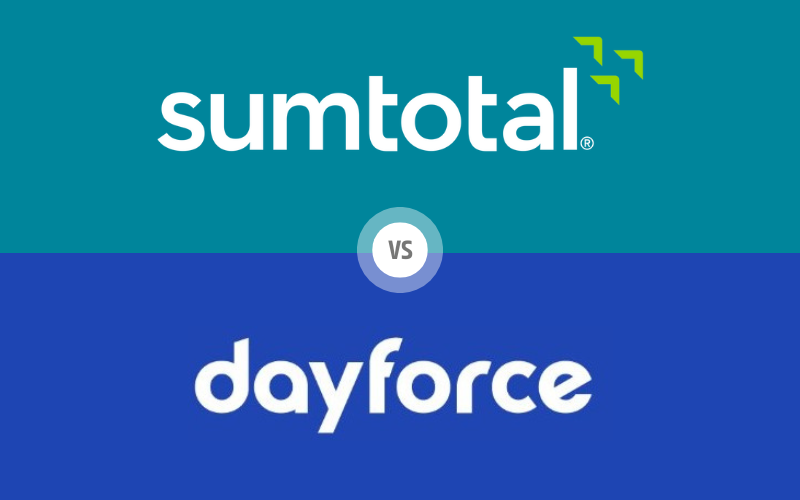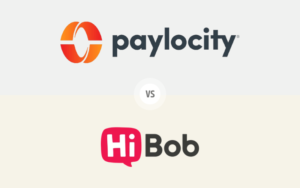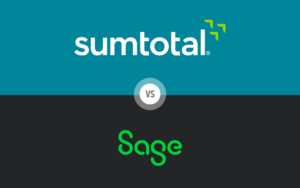In this comprehensive blog post, we delve into a detailed comparison of SumTotal vs Dayforce, two leading Human Capital Management (HCM) systems, to help you determine which solution best fits your organizational needs. We will explore various facets of each platform, including user interface and experience, core HR functions, payroll management, time and attendance tracking, and more. This thorough analysis aims to provide you with insightful evaluations on each system’s strengths, weaknesses, and overall capabilities. Whether you are managing a small team or overseeing a multinational corporation, understanding the nuances of SumTotal versus Dayforce is essential for selecting the right HCM system that aligns with your strategic goals and operational requirements.
Table of Contents
User Interface and User Experience
When selecting an Human Capital Management (HCM) system, the user interface (UI) and user experience (UX) are crucial factors that influence adoption and efficiency. This comparison of SumTotal and Dayforce examines how each platform approaches UI and UX to help you determine which software aligns best with your organization’s needs.

SumTotal: User Interface and User Experience
SumTotal offers a comprehensive and feature-rich interface designed for organizations seeking extensive functionality and customization options. While the platform’s UI may initially seem complex due to its wide-ranging capabilities, it is structured to support a variety of HR processes and workflows.
Key Features of SumTotal’s UI/UX:
- Customization: SumTotal excels in providing a high degree of customization, allowing users to tailor the dashboard and interface to their specific requirements.
- Comprehensive Functionality: The system supports a broad array of HR functions, making it suitable for organizations with complex HR needs.
- Learning Resources: To help users navigate its extensive features, SumTotal offers comprehensive training and support materials.
Dayforce: User Interface and User Experience
Dayforce presents a more streamlined and modern interface that prioritizes ease of use without compromising on functionality. The design focuses on accessibility for users of all technical levels, combining aesthetics with practicality.
Key Features of Dayforce’s UI/UX:
- Intuitive Design: Dayforce features a user-friendly layout that enhances engagement through simplicity and ease of navigation.
- Responsive Interaction: The platform offers dynamic responses to user inputs, streamlining everyday tasks.
- Visual Appeal: With an attractive design, Dayforce provides a pleasant user experience that can boost adoption rates.
Comparison and Conclusion
In comparing SumTotal and Dayforce, it’s important to consider both user feedback and specific feature offerings:
- User Ratings: Dayforce generally receives higher ratings than SumTotal, with an overall rating of 87% compared to SumTotal’s 81% for their talent development products.
- User Engagement: Dayforce has significantly more verified user reviews (1,168) compared to SumTotal (56) for their talent development offerings, potentially indicating greater market presence or user engagement.
- Service and Support: Dayforce is rated higher than SumTotal in service and support, which is an important aspect of the overall user experience.
- Common Features: Both systems offer talent development features, demonstrating their commitment to comprehensive HCM solutions.
The choice between SumTotal and Dayforce will depend on your organization’s specific needs and priorities. SumTotal may be more suitable for organizations that require extensive customization and have complex HR workflows. Its depth of features could be particularly valuable for larger enterprises willing to invest time in training and system setup.
Dayforce, with its higher user ratings and emphasis on intuitive design, might be more appealing to organizations prioritizing ease of use and quick adoption. Its streamlined interface could be particularly effective in fast-paced environments where efficiency is key.
Ultimately, both platforms offer strong capabilities with different approaches to UI and UX. Consider your organization’s size, complexity of HR processes, and the importance of immediate usability versus extensive customization when making your decision.
Core HR Functions
Core HR functions are essential components of any Human Capital Management (HCM) software, streamlining critical processes such as employee data management, payroll, and benefits administration. In this comparison of SumTotal vs Dayforce, we’ll explore how each platform approaches these fundamental HR capabilities to help you determine which solution best fits your organization’s needs.

SumTotal: Core HR Functions
SumTotal offers a comprehensive set of HR management tools designed to support a wide range of organizational needs. While specific details about its global capabilities are not directly available in our current data, the system is known for its extensive functionality.
Key Features of SumTotal’s Core HR Functions:
- Human Resource Management: SumTotal provides tools for managing employee data and HR processes efficiently.
- Payroll Management: The system includes capabilities for handling payroll operations.
- Employee Self-Service: SumTotal offers features that allow employees to access and manage their own information.
Dayforce: Core HR Functions
Dayforce is recognized for its integrated approach to core HR functions, emphasizing real-time data processing and accessibility. It aims to provide a seamless user experience by combining various HR components into a single, cohesive platform.
Key Features of Dayforce’s Core HR Functions:
- Centralized Employee Information: Dayforce maintains a single employee record across all modules, ensuring data consistency and accuracy.
- Human Resource Management: The platform offers comprehensive tools for managing HR processes and employee data.
- Payroll Management: Dayforce includes robust payroll processing capabilities.
- Employee Self-Service: The system provides features that enable employees to access and manage their personal information.
Comparison and Conclusion
When comparing SumTotal and Dayforce in terms of core HR functions, it’s important to consider both feature sets and user feedback:
- Common Features: Both systems offer essential HR functions including payroll management, human resource management, and employee self-service capabilities.
- User Ratings: Dayforce generally receives higher ratings than SumTotal, with an overall rating of 87% compared to SumTotal’s 81%.
- User Base: Dayforce has significantly more customer reviews (5,903) compared to SumTotal (96), which may indicate a larger user base or greater market presence.
- Likelihood to Recommend: Dayforce has a higher likelihood to recommend score (83%) compared to SumTotal (78%).
Dayforce’s higher ratings and larger number of reviews suggest that it may offer a more satisfying user experience for many organizations. Its emphasis on centralized employee information and real-time processing could be particularly beneficial for businesses seeking an integrated, efficient HR solution.
SumTotal, while having fewer reviews, still maintains a solid rating, indicating that it effectively meets the needs of its user base. Its comprehensive feature set may appeal to organizations with complex HR requirements.
The choice between SumTotal and Dayforce will ultimately depend on your specific organizational needs, the importance of user ratings in your decision-making process, and how well each system’s particular strengths align with your HR priorities. Both platforms offer robust core HR capabilities, but their distinct approaches and user satisfaction levels may make one more suitable for your organization than the other.
Payroll Management
Efficient payroll management is crucial for any organization, ensuring that employees are paid accurately and on time. In this comparison of SumTotal vs Dayforce, we examine how each platform handles payroll functions, focusing on their capabilities and user experiences.

SumTotal: Payroll Management
SumTotal offers a payroll management solution designed to handle various HR processes, including payroll. While specific details about its global capabilities are not directly available in our current data, the system is known for its comprehensive approach to HR management.
Key Features of SumTotal’s Payroll Management:
- Integrated Data Management: SumTotal allows users to control and track data, processes, pre-audits, employee eligibility, and benefit offerings, ensuring consistency across HR functions.
- Human Resource Management: The system provides tools for managing employee data and HR processes efficiently, which can support payroll operations.
- Employee Self-Service: SumTotal offers features that allow employees to access and manage their own information, potentially including payroll-related data.
Dayforce: Payroll Management
Dayforce is recognized for its integrated approach to HR functions, including payroll management. It emphasizes real-time processing and accessibility, aiming to provide a seamless user experience.
Key Features of Dayforce’s Payroll Management:
- Real-Time Audits: Dayforce offers real-time auditing capabilities, which can help ensure accuracy in payroll processing.
- Automated Tax Filing and Payments: The system includes features for automated tax filing and payments, streamlining compliance processes.
- Human Resource Management: Dayforce provides comprehensive tools for managing HR processes and employee data, supporting efficient payroll operations.
- Employee Self-Service: The platform enables employees to access and manage their personal information, which may include payroll-related data.
Comparison and Conclusion
When comparing SumTotal and Dayforce for payroll management, consider these key points:
- Common Features: Both systems offer payroll management, human resource management, and employee self-service capabilities.
- Automated Tax Filing: Dayforce provides automated tax filing and payments, while this feature is not explicitly mentioned for SumTotal in our current data.
- Mobile Experience: Dayforce has a higher iPhone app rating (4.4) compared to SumTotal (1.9), which may indicate a better mobile user experience.
- User Engagement: Dayforce has significantly more user reviews on mobile platforms, potentially suggesting greater user engagement or market presence.
Dayforce’s higher mobile app ratings and the inclusion of automated tax filing features may make it particularly appealing for organizations prioritizing these aspects. Its real-time audit capability could be beneficial for businesses seeking immediate visibility into their payroll processes.
SumTotal, while having fewer reviews and a lower mobile app rating, still offers a comprehensive set of HR management tools that include payroll functionalities. Its integrated approach to data management could be valuable for organizations looking for a holistic HR solution.
The choice between SumTotal and Dayforce for payroll management will ultimately depend on your specific organizational needs, the importance of mobile accessibility, and how well each system’s particular strengths align with your payroll priorities. Both platforms offer robust capabilities, but their distinct features and user experiences may make one more suitable for your organization than the other.
Time and Attendance Tracking
Time and attendance tracking is a critical component of workforce management, affecting everything from payroll accuracy to compliance with labor laws. This comparison between SumTotal and Dayforce will help you understand which HCM software might better suit your needs when it comes to monitoring and managing employee attendance effectively.

SumTotal: Time and Attendance Tracking
SumTotal offers time and attendance capabilities as part of its comprehensive HR management system. While specific details about its time tracking features are limited in our current data, the system is known for its integrated approach to HR processes.
Key Features of SumTotal’s Time and Attendance Tracking:
- Integrated Data Management: SumTotal allows users to control and track data, processes, and pre-audits, which can support time and attendance management.
- Time Off Tracking: The system includes features for tracking employee time off.
- Employee Self-Service: SumTotal offers features that allow employees to access and manage their own information, potentially including time and attendance data.
Dayforce: Time and Attendance Tracking
Dayforce provides time and attendance tracking as part of its integrated HCM solution. It emphasizes real-time processing and accessibility, aiming to provide a seamless user experience.
Key Features of Dayforce’s Time and Attendance Tracking:
- Real-Time Audits: Dayforce offers real-time auditing capabilities, which can help ensure accuracy in time and attendance tracking.
- Time Off Tracking: The system includes features for managing employee time off.
- Mobile Accessibility: With a highly-rated mobile app, Dayforce allows for time and attendance management on-the-go.
Comparison and Conclusion
When comparing SumTotal and Dayforce for time and attendance tracking, consider these key points:
- Common Features: Both systems offer time off tracking capabilities.
- Mobile Experience: Dayforce has a higher iPhone app rating (4.4) compared to SumTotal (1.9), which may indicate a better mobile user experience for time and attendance tracking.
- User Engagement: Dayforce has significantly more user reviews on mobile platforms, potentially suggesting greater user engagement or market presence.
- Real-Time Processing: Dayforce explicitly offers real-time audits, which can be beneficial for immediate time and attendance management.
Dayforce’s higher mobile app ratings and real-time audit feature may make it particularly appealing for organizations prioritizing mobile accessibility and immediate data processing in their time and attendance tracking. The high number of mobile app reviews could indicate that many users find the Dayforce mobile experience satisfactory for managing time-related tasks.
SumTotal, while having fewer reviews and a lower mobile app rating, still offers a comprehensive set of HR management tools that include time and attendance functionalities. Its integrated approach to data management could be valuable for organizations looking for a holistic HR solution.
The choice between SumTotal and Dayforce for time and attendance tracking will ultimately depend on your specific organizational needs, the importance of mobile accessibility, and how well each system’s particular strengths align with your workforce management priorities. Both platforms offer capable solutions, but their distinct features and user experiences may make one more suitable for your organization than the other.
Benefits Administration
Benefits administration is a vital aspect of Human Capital Management (HCM) systems, impacting employee satisfaction and organizational efficiency. This comparison of SumTotal vs Dayforce explores how each platform handles benefits administration, helping you choose the right software for your needs.

SumTotal: Benefits Administration
SumTotal offers benefits administration as part of its comprehensive HR management system. While specific details about its benefits features are limited in our current data, the system is known for its ability to handle complex HR processes.
Key Features of SumTotal’s Benefits Administration:
- Complex Benefit Plan Management: SumTotal can manage complex benefit plans for all employees, allowing for flexibility in benefits administration.
- Employee Self-Service: The system includes features that allow employees to access and manage their own information, potentially including benefits data.
- Integrated HR Management: SumTotal’s benefits administration is part of a larger HR management system, which may offer advantages in data consistency and process integration.
Dayforce: Benefits Administration
Dayforce provides benefits administration as part of its integrated HCM solution. It emphasizes user-friendly interfaces and mobile accessibility.
Key Features of Dayforce’s Benefits Administration:
- Employee Benefits Management: Dayforce offers capabilities for managing employee benefits.
- Employee Self-Service: The system includes a self-service portal that allows employees to access and manage their information, including benefits.
- Mobile Accessibility: With a highly-rated mobile app, Dayforce allows for benefits management on-the-go.
Comparison and Conclusion
When comparing SumTotal and Dayforce for benefits administration, consider these key points:
- Common Features: Both systems offer the ability to manage employee benefits and provide employee self-service capabilities.
- Mobile Experience: Dayforce has a higher iPhone app rating (4.4) compared to SumTotal (1.9), which may indicate a better mobile user experience for benefits management.
- User Engagement: Dayforce has significantly more user reviews on mobile platforms, potentially suggesting greater user engagement or market presence.
Dayforce’s higher mobile app ratings and larger number of reviews may make it particularly appealing for organizations prioritizing mobile accessibility in their benefits administration. The high number of mobile app reviews could indicate that many users find the Dayforce mobile experience satisfactory for managing benefits-related tasks.
SumTotal, while having fewer reviews and a lower mobile app rating, offers a comprehensive set of HR management tools that include benefits administration. Its ability to manage complex benefit plans could be valuable for organizations with diverse or intricate benefits structures.
The choice between SumTotal and Dayforce for benefits administration will ultimately depend on your specific organizational needs, the importance of mobile accessibility, and how well each system’s particular strengths align with your benefits management priorities. Both platforms offer capable solutions, but their distinct features and user experiences may make one more suitable for your organization than the other.
Performance Management
Effective performance management systems are crucial for tracking employee achievements, aligning individual goals with organizational objectives, and fostering professional development. In this section, we compare SumTotal vs Dayforce in their approach to performance management, helping you determine which platform best fits your company’s needs.

SumTotal: Performance Management
SumTotal offers performance management capabilities as part of its comprehensive talent development solution. While specific details about its performance management features are limited in our current data, the system is known for its integrated approach to HR processes.
Key Features of SumTotal’s Performance Management:
- Talent Development Integration: SumTotal’s performance management is part of its Talent Development module, potentially allowing for seamless integration with learning and career development processes.
- Performance Management Tools: The system includes features for managing employee performance, though specific details are not available in our current data.
- Comprehensive HR Solution: SumTotal’s performance management is part of a larger HR management system, which may offer advantages in data consistency and process integration.
Dayforce: Performance Management
Dayforce provides performance management as part of its integrated HCM solution. It emphasizes user-friendly interfaces and comprehensive HR functionality.
Key Features of Dayforce’s Performance Management:
- Performance Management Tools: Dayforce offers capabilities for managing employee performance.
- Integrated HCM Solution: Performance management in Dayforce is part of a broader HCM platform, potentially allowing for seamless integration with other HR processes.
- User-Friendly Interface: While not specifically mentioned for performance management, Dayforce is generally known for its intuitive user interface.
Comparison and Conclusion
When comparing SumTotal and Dayforce for performance management, consider these key points:
- Common Features: Both systems offer performance management capabilities as part of their broader HR management solutions.
- User Ratings: Dayforce has a higher overall rating (87%) compared to SumTotal (81%), which may indicate greater user satisfaction.
- Customer Base: Dayforce has significantly more customers (6,055) compared to SumTotal (84), which could suggest broader market adoption or appeal.
Dayforce’s higher user ratings and larger customer base may make it particularly appealing for organizations looking for a widely-adopted and well-received performance management solution. The significant difference in customer numbers could indicate that Dayforce has gained more traction in the market.
SumTotal, while having fewer customers and a slightly lower rating, still offers a comprehensive set of HR management tools that include performance management. Its integration with talent development features could be valuable for organizations looking to closely align performance management with employee growth and learning.
The choice between SumTotal and Dayforce for performance management will ultimately depend on your specific organizational needs, the importance of user ratings and market presence in your decision-making process, and how well each system’s particular strengths align with your performance management priorities. Both platforms offer capable solutions, but their distinct features, user satisfaction levels, and market presence may make one more suitable for your organization than the other.
Talent Management and Recruiting
Talent management and recruiting are critical for building a skilled and motivated workforce. An effective Human Capital Management (HCM) system should streamline the recruitment process and support strategic talent initiatives. In this comparison of SumTotal vs Dayforce, we examine each platform’s offerings in managing talent effectively.

SumTotal: Talent Management and Recruiting
SumTotal offers talent management and recruiting capabilities as part of its comprehensive HR management solution. While specific details about its features are limited in our current data, the system is known for its integrated approach to HR processes.
Key Features of SumTotal’s Talent Management and Recruiting:
- Talent Development: SumTotal includes a Talent Development module, which may support various aspects of talent management.
- Recruiting/ATS: The system offers recruiting and applicant tracking system (ATS) capabilities.
- Performance Management: SumTotal provides tools for managing employee performance.
- Succession Planning: The platform includes features for succession planning.
Dayforce: Talent Management and Recruiting
Dayforce provides talent management and recruiting as part of its integrated HCM solution. It emphasizes user-friendly interfaces and comprehensive HR functionality.
Key Features of Dayforce’s Talent Management and Recruiting:
- Recruiting/ATS: Dayforce offers capabilities for recruiting and applicant tracking.
- Performance Management: The system includes tools for managing employee performance.
- Succession Planning: Dayforce provides features for succession planning.
- Integrated HCM Solution: Talent management and recruiting in Dayforce are part of a broader HCM platform, potentially allowing for seamless integration with other HR processes.
Comparison and Conclusion
When comparing SumTotal and Dayforce for talent management and recruiting, consider these key points:
- Common Features: Both systems offer performance management, succession planning, and recruiting/ATS capabilities.
- User Satisfaction: Dayforce has a higher likelihood to recommend score (9.0) compared to SumTotal (7.5), which may indicate greater user satisfaction.
- Customer Base: Dayforce has significantly more customers (6,055) compared to SumTotal (84), which could suggest broader market adoption or appeal.
Dayforce’s higher recommendation score and larger customer base may make it particularly appealing for organizations looking for a widely-adopted and well-received talent management and recruiting solution. The significant difference in customer numbers could indicate that Dayforce has gained more traction in the market.
SumTotal, while having fewer customers and a slightly lower recommendation score, still offers a comprehensive set of HR management tools that include talent management and recruiting features. Its talent development module could be valuable for organizations looking to closely align recruitment with employee growth and learning.
The choice between SumTotal and Dayforce for talent management and recruiting will ultimately depend on your specific organizational needs, the importance of user ratings and market presence in your decision-making process, and how well each system’s particular strengths align with your talent management priorities. Both platforms offer capable solutions, but their distinct features, user satisfaction levels, and market presence may make one more suitable for your organization than the other.
Learning and Development
In the realm of Human Capital Management (HCM) systems, learning and development modules play a pivotal role in fostering employee growth and maintaining competitive advantage. This comparison of SumTotal vs Dayforce highlights each platform’s capabilities in supporting learning and development strategies based on available data.

SumTotal: Learning and Development
SumTotal offers learning and development capabilities as part of its comprehensive HR management solution. While specific details about its features are limited in our current data, the system is known for its integrated approach to HR processes.
Key Features of SumTotal’s Learning and Development:
- Talent Development: SumTotal includes a Talent Development module, which likely supports various aspects of learning and development.
- Performance Management: The system offers performance management capabilities, which may integrate with learning and development processes.
- Integrated HR Solution: SumTotal’s learning and development features are part of a larger HR management system, which may offer advantages in data consistency and process integration.
Dayforce: Learning and Development
Dayforce provides learning and development as part of its integrated HCM solution. It emphasizes user-friendly interfaces and comprehensive HR functionality.
Key Features of Dayforce’s Learning and Development:
- Performance Management: Dayforce offers performance management capabilities, which could be related to learning and development processes.
- Integrated HCM Solution: Learning and development in Dayforce are part of a broader HCM platform, potentially allowing for seamless integration with other HR processes.
- Mobile Accessibility: Dayforce has highly-rated mobile apps, which may facilitate on-the-go access to learning and development resources.
Comparison and Conclusion
When comparing SumTotal and Dayforce for learning and development, consider these key points:
- Common Features: Both systems offer performance management capabilities, which could be related to learning and development processes.
- User Satisfaction: Dayforce has a higher likelihood to recommend score (9.0) compared to SumTotal (7.5), which may indicate greater user satisfaction.
- Customer Base: Dayforce has significantly more customers (6,055) compared to SumTotal (84), which could suggest broader market adoption or appeal.
- Mobile Experience: Dayforce has higher ratings for its mobile apps (iPhone: 4.4, Android: 4.0) compared to SumTotal (iPhone: 1.9, Android: 2.1), which may be important for organizations prioritizing mobile access to learning resources.
Dayforce’s higher recommendation score, larger customer base, and better-rated mobile apps may make it particularly appealing for organizations looking for a widely-adopted and well-received learning and development solution. The significant difference in customer numbers could indicate that Dayforce has gained more traction in the market.
SumTotal, while having fewer customers and slightly lower ratings, still offers a comprehensive set of HR management tools that include learning and development features. Its talent development module could be valuable for organizations looking to closely align learning and development with other HR processes.
The choice between SumTotal and Dayforce for learning and development will ultimately depend on your specific organizational needs, the importance of user ratings and market presence in your decision-making process, and how well each system’s particular strengths align with your learning and development priorities. Both platforms offer capable solutions, but their distinct features, user satisfaction levels, and market presence may make one more suitable for your organization than the other.
Reporting and Analytics
In today’s data-driven business environment, the ability to generate insightful reports and analytics is a fundamental feature of any Human Capital Management (HCM) system. This section compares SumTotal vs Dayforce in terms of their capabilities to provide reporting and analytics based on available data.

SumTotal: Reporting and Analytics
SumTotal offers reporting and analytics capabilities as part of its comprehensive HR management solution. While specific details about its features are limited in our current data, the system is known for its integrated approach to HR processes.
Key Features of SumTotal’s Reporting and Analytics:
- Integrated HR Solution: SumTotal’s reporting and analytics features are part of a larger HR management system, which may offer advantages in data consistency and process integration.
- Mobile Access: SumTotal provides mobile apps, though with lower ratings compared to Dayforce, which could affect mobile access to reports and analytics.
Dayforce: Reporting and Analytics
Dayforce provides reporting and analytics as part of its integrated HCM solution. It emphasizes data-driven decision-making and real-time functionality.
Key Features of Dayforce’s Reporting and Analytics:
- Data-Driven Decisions: Dayforce offers “Data-driven decisions” as a basic feature, which likely supports reporting and analytics capabilities.
- Real-Time Audits: The system includes real-time audit functionality, which could be beneficial for up-to-date reporting.
- Mobile Accessibility: Dayforce has highly-rated mobile apps, which may facilitate on-the-go access to reports and analytics.
Comparison and Conclusion
When comparing SumTotal and Dayforce for reporting and analytics, consider these key points:
- Real-Time Functionality: Dayforce explicitly offers real-time audits, which could be advantageous for timely reporting and analytics.
- Mobile Experience: Dayforce has higher ratings for its mobile apps (iPhone: 4.4, Android: 4.0) compared to SumTotal (iPhone: 1.9, Android: 2.1), which may be important for organizations prioritizing mobile access to reports and analytics.
- Customer Base: Dayforce has significantly more customers (6,055) compared to SumTotal (84), which could suggest broader market adoption or appeal.
Dayforce’s emphasis on data-driven decisions, real-time functionality, and better-rated mobile apps may make it particularly appealing for organizations looking for accessible and timely reporting and analytics. The significant difference in customer numbers could indicate that Dayforce has gained more traction in the market.
SumTotal, while having fewer customers and lower-rated mobile apps, still offers a comprehensive set of HR management tools that include reporting and analytics features. Its integrated approach could be valuable for organizations looking for cohesive data management across HR processes.
The choice between SumTotal and Dayforce for reporting and analytics will ultimately depend on your specific organizational needs, the importance of mobile accessibility, and how well each system’s particular strengths align with your data analysis priorities. Both platforms offer reporting and analytics solutions, but their distinct features, mobile app ratings, and market presence may make one more suitable for your organization than the other.
Compliance and Security
In the landscape of Human Capital Management (HCM) systems, compliance and security are critical components that safeguard sensitive employee data and ensure adherence to various regulatory standards. This evaluation of SumTotal vs Dayforce will help you understand how each platform addresses these vital areas based on available information.

SumTotal: Compliance and Security
SumTotal offers compliance and security features as part of its comprehensive HR management solution. While specific details about its security measures are limited in our current data, the system is known for its regulatory compliance capabilities.
Key Features of SumTotal’s Compliance and Security:
- Regulatory Compliance: SumTotal can “Ensure full regulatory compliance for all states, provinces, and regions in North America, the UK, Ireland and Australia.”
- Integrated HR Solution: SumTotal’s compliance and security features are part of a larger HR management system, which may offer advantages in data consistency and process integration.
- Mobile Access: SumTotal provides mobile apps, though with lower ratings compared to Dayforce, which could affect secure mobile access to HR data.
Dayforce: Compliance and Security
Dayforce provides compliance and security features as part of its integrated HCM solution. It emphasizes governance and security in its basic feature set.
Key Features of Dayforce’s Compliance and Security:
- Governance and Security: Dayforce offers “Governance and security” as a basic feature, indicating a focus on these critical areas.
- Integrated HCM Solution: Compliance and security in Dayforce are part of a broader HCM platform, potentially allowing for seamless integration with other HR processes.
- Mobile Accessibility: Dayforce has highly-rated mobile apps, which may facilitate secure on-the-go access to HR data.
Comparison and Conclusion
When comparing SumTotal and Dayforce for compliance and security, consider these key points:
- Regulatory Compliance: SumTotal explicitly mentions compliance capabilities for specific regions, while Dayforce emphasizes governance and security as a basic feature.
- Mobile Experience: Dayforce has higher ratings for its mobile apps (iPhone: 4.4, Android: 4.0) compared to SumTotal (iPhone: 1.9, Android: 2.1), which may be important for organizations prioritizing secure mobile access to HR data.
- Customer Base: Dayforce has significantly more customers (6,055) compared to SumTotal (84), which could suggest broader market adoption or appeal.
Dayforce’s emphasis on governance and security as a basic feature, coupled with its better-rated mobile apps, may make it particularly appealing for organizations looking for accessible and secure HR management. The significant difference in customer numbers could indicate that Dayforce has gained more traction in the market.
SumTotal, while having fewer customers and lower-rated mobile apps, offers a comprehensive set of HR management tools that include specific regional compliance capabilities. This could be valuable for organizations operating in the mentioned regions and looking for assured regulatory compliance.
The choice between SumTotal and Dayforce for compliance and security will ultimately depend on your specific organizational needs, the importance of mobile accessibility, and how well each system’s particular strengths align with your compliance and security priorities. Both platforms offer compliance and security solutions, but their distinct features, mobile app ratings, and market presence may make one more suitable for your organization than the other.
Integration and Compatibility
In the realm of Human Capital Management (HCM) systems, integration and compatibility are crucial for ensuring seamless operation and enhancing the overall functionality of business processes. This comparison of SumTotal vs Dayforce explores how each platform facilitates integration with other systems and software based on available information.

SumTotal: Integration and Compatibility
SumTotal offers integration capabilities as part of its comprehensive HR management solution. While specific details about its integration features are limited in our current data, the system is known to have some integration options.
Key Features of SumTotal’s Integration and Compatibility:
- Specific Integrations: SumTotal has integrations with Mercury XRS, Lightcast, Sapper, and EdCast.
- Integrated HR Solution: SumTotal’s integration features are part of a larger HR management system, which may offer advantages in data consistency across HR processes.
- Mobile Access: SumTotal provides mobile apps, though with lower ratings compared to Dayforce, which could affect mobile integration capabilities.
Dayforce: Integration and Compatibility
Dayforce provides integration capabilities as part of its integrated HCM solution. It offers several integration options and emphasizes real-time functionality.
Key Features of Dayforce’s Integration and Compatibility:
- API Availability: Dayforce offers an API, which can facilitate custom integrations with other systems.
- Specific Integrations: Dayforce integrates with Aquera, Asurint, Beekeeper, Deloitte, Enforce, PayTech, Cornerstone, and Magnisol.
- Real-Time Functionality: Dayforce offers “Real-time audits” as a basic feature, which could extend to its integration capabilities.
- Mobile Accessibility: Dayforce has highly-rated mobile apps, which may facilitate better mobile integration experiences.
Comparison and Conclusion
When comparing SumTotal and Dayforce for integration and compatibility, consider these key points:
- API Availability: Dayforce offers an API, while this feature is not mentioned for SumTotal in our current data.
- Integration Partners: Both systems have several specific integrations, with some overlap in HR-related services.
- Mobile Experience: Dayforce has higher ratings for its mobile apps (iPhone: 4.4, Android: 4.0) compared to SumTotal (iPhone: 1.9, Android: 2.1), which may be important for organizations prioritizing mobile integration capabilities.
- Real-Time Functionality: Dayforce explicitly mentions real-time audits as a feature, which could be beneficial for integration scenarios requiring up-to-date data.
Dayforce’s API availability, real-time functionality, and better-rated mobile apps may make it particularly appealing for organizations looking for flexible and mobile-friendly integration options. The availability of an API could provide more customization possibilities for integrations.
SumTotal, while having lower-rated mobile apps and no mentioned API, still offers integration with several partners. This could be valuable for organizations specifically needing to connect with the mentioned integration partners.
The choice between SumTotal and Dayforce for integration and compatibility will ultimately depend on your specific organizational needs, the importance of API availability and mobile accessibility, and how well each system’s particular integrations align with your existing or planned software ecosystem.
Customer Support and Service
Effective customer support and service are essential for the successful implementation and ongoing use of any Human Capital Management (HCM) system. This comparison between SumTotal vs Dayforce highlights each platform’s approach to providing support to their users based on available information.

SumTotal: Customer Support and Service
SumTotal offers customer support and service as part of its comprehensive HR management solution. While specific details about its support features are limited in our current data, the system provides some self-service capabilities.
Key Features of SumTotal’s Customer Support and Service:
- Employee Self-Service: SumTotal includes features that allow employees to access and manage their own information, potentially reducing the need for direct support in some areas.
- Mobile Access: SumTotal provides mobile apps, though with lower ratings compared to Dayforce, which could affect the ease of accessing support on mobile devices.
Dayforce: Customer Support and Service
Dayforce provides customer support and service as part of its integrated HCM solution. It emphasizes user-friendly interfaces and self-service options.
Key Features of Dayforce’s Customer Support and Service:
- Employee Self-Service: Dayforce offers features that enable employees to access and manage their personal information, which may reduce the need for direct support interventions.
- Mobile Accessibility: Dayforce has highly-rated mobile apps, which may facilitate easier access to support resources on-the-go.
Comparison and Conclusion
When comparing SumTotal and Dayforce for customer support and service, consider these key points:
- Live Support: According to the available information, neither Dayforce nor SumTotal Payroll offer live customer support.
- Self-Service Capabilities: Both systems provide employee self-service features, which can be an important aspect of user support.
- Mobile Experience: Dayforce has higher ratings for its mobile apps (iPhone: 4.4, Android: 4.0) compared to SumTotal (iPhone: 1.9, Android: 2.1), which may indicate better user experience or support for mobile users.
- Customer Base: Dayforce has significantly more customers (6,055) compared to SumTotal (84), which could potentially impact the scale and nature of their support services.
Dayforce’s better-rated mobile apps and larger customer base may suggest a more user-friendly experience, which could indirectly relate to easier access to support resources and potentially higher user satisfaction. The significant difference in customer numbers could indicate that Dayforce has gained more traction in the market, which might translate to more developed support infrastructure.
SumTotal, while having fewer customers and lower-rated mobile apps, still offers a comprehensive set of HR management tools that include self-service capabilities. This could be valuable for organizations looking for ways to empower employees to find information and resolve issues independently.
The choice between SumTotal and Dayforce for customer support and service will ultimately depend on your specific organizational needs, the importance of mobile accessibility, and how well each system’s self-service capabilities align with your support requirements. Both platforms offer self-service solutions, but their distinct features, mobile app ratings, and market presence may make one more suitable for your organization than the other.
Pricing and Cost-effectiveness
Pricing and cost-effectiveness are critical factors when choosing a Human Capital Management (HCM) system. This comparison between SumTotal vs Dayforce focuses on the available information regarding their pricing structures and overall value, helping organizations determine which system might offer the best fit for their budget and HR needs.

SumTotal: Pricing and Cost-effectiveness
SumTotal offers HCM solutions as part of its comprehensive HR management system. While specific pricing details are not publicly available, we can note some key points based on the available information.
Key Features of SumTotal’s Pricing and Cost-effectiveness:
- No Free Plan: SumTotal does not offer a free plan.
- No Free Trial: There is no mention of a free trial for SumTotal.
- Custom Pricing: Pricing information is not available on the SumTotal website, suggesting a custom pricing approach.
For more information about pricing, please visit SumTotal’s website.
Dayforce: Pricing and Cost-effectiveness
Dayforce provides HCM solutions as part of its integrated platform. Like SumTotal, detailed pricing information is not publicly available, but we can highlight some key points.
Key Features of Dayforce’s Pricing and Cost-effectiveness:
- No Free Plan: Dayforce does not offer a free plan.
- No Free Trial: There is no mention of a free trial for Dayforce.
- Custom Pricing: Pricing information is not available on the Dayforce website, indicating a custom pricing model.
For more information about pricing, please visit Dayforce’s website.
Comparison and Conclusion
When comparing SumTotal and Dayforce in terms of pricing and cost-effectiveness, consider these key points:
- Pricing Transparency: Both systems do not provide public pricing information, suggesting that costs are likely customized based on specific organizational needs.
- Free Options: Neither SumTotal nor Dayforce offer free plans or trials, indicating that both are positioned as premium enterprise solutions.
- User Satisfaction: Dayforce has a higher likelihood to recommend score (9.0) compared to SumTotal (7.5), which could indirectly reflect perceived value for money.
- Market Presence: Dayforce has significantly more customers (6,055) compared to SumTotal (84), which might suggest broader market appeal or cost-effectiveness.
The lack of public pricing information for both SumTotal and Dayforce means that organizations will need to contact these vendors directly to get accurate pricing based on their specific needs. This custom approach to pricing can be beneficial for businesses with unique requirements but may make initial comparisons challenging.
Dayforce’s higher recommendation score and larger customer base could indicate greater user satisfaction and potentially better perceived value, though this should be weighed against your organization’s specific needs and budget.
When choosing between SumTotal and Dayforce, organizations should consider:
- Requesting detailed quotes from both vendors based on their specific requirements.
- Evaluating the total cost of ownership, including implementation, training, and ongoing support.
- Considering the potential return on investment based on the features offered and how well they align with organizational needs.
- Looking at user reviews and case studies to understand the real-world value other businesses have derived from each system.
User Reviews and Testimonials
User reviews and testimonials play a crucial role in evaluating the effectiveness and user satisfaction of Human Capital Management (HCM) systems. This section explores available user feedback for SumTotal vs Dayforce, providing insights based on the information at hand.

SumTotal: User Reviews and Testimonials
SumTotal offers HCM solutions as part of its comprehensive HR management system. While detailed user reviews are limited in our current data, we can provide some insights based on available information.
Key Points from SumTotal User Feedback:
- Mobile App Ratings:
- iPhone app rating: 1.9 (based on 19 reviews)
- Android app rating: 2.1 (based on 3,980 reviews)
- Customer Base: SumTotal has 84 reported customers.
- Trustpilot Ratings: No Trustpilot ratings or reviews are available for SumTotal.
Dayforce: User Reviews and Testimonials
Dayforce provides HCM solutions as part of its integrated platform. The available data offers more insights into user feedback for Dayforce compared to SumTotal.
Key Points from Dayforce User Feedback:
- Mobile App Ratings:
- iPhone app rating: 4.4 (based on 13,100 reviews)
- Android app rating: 4.0 (based on 74,100 reviews)
- Customer Base: Dayforce has 6,055 reported customers.
- Trustpilot Ratings: No Trustpilot ratings or reviews are available for Dayforce.
Comparison and Conclusion
When comparing SumTotal and Dayforce based on user reviews and testimonials, consider these key points:
- Mobile App Experience: Dayforce significantly outperforms SumTotal in mobile app ratings on both iOS and Android platforms. This suggests that Dayforce users generally have a better mobile experience.
- User Engagement: Dayforce has a much larger number of mobile app reviews, indicating higher user engagement or a larger active user base on mobile platforms.
- Market Presence: Dayforce has a substantially larger reported customer base (6,055) compared to SumTotal (84), which could suggest broader market appeal or user satisfaction.
- Limited Review Data: Neither system has Trustpilot ratings or reviews, limiting our ability to provide a comprehensive overview of user sentiments across all aspects of these platforms.
Based on the available data, Dayforce appears to have an advantage in terms of mobile app user satisfaction and overall market presence. The significantly higher mobile app ratings and larger number of reviews for Dayforce indicate that its users are generally more satisfied with the mobile experience compared to SumTotal users.
However, it’s important to note that this comparison is primarily based on mobile app ratings and customer numbers. These factors, while important, don’t provide a complete picture of the overall user experience with the full HCM systems.
When choosing between SumTotal and Dayforce, organizations should consider:
- The importance of mobile accessibility in their HR processes.
- The potential benefits of choosing a more widely adopted system (Dayforce) versus a potentially more niche solution (SumTotal).
- Requesting case studies or references from both vendors to gain more comprehensive insights into user experiences.
- Conducting trials or demos of both systems to assess how well they meet specific organizational needs.
Conclusion
Choosing the right Human Capital Management (HCM) system is a critical decision that can significantly impact an organization’s HR processes. This comparison of SumTotal vs Dayforce has examined various aspects of each system based on available data, providing insights to help in making an informed decision.
Key Similarities
Both SumTotal and Dayforce offer:
- Employee self-service features
- Performance management capabilities
- Recruiting/ATS functionalities
- Succession planning tools
- No free plans or free trials
- No live customer support (according to available data)
Notable Differences
- Customer Base:
- Dayforce: 6,055 reported customers
- SumTotal: 84 reported customers
- Mobile App Experience:
- Dayforce: Higher ratings (iPhone: 4.4, Android: 4.0) and more reviews
- SumTotal: Lower ratings (iPhone: 1.9, Android: 2.1) and fewer reviews
- Specific Features:
- Dayforce offers “Real-time audits” and “Data-driven decisions” as basic features
- SumTotal provides “Regulatory compliance” for specific regions
Making the Right Choice
When deciding between SumTotal and Dayforce, consider the following factors:
- Mobile Accessibility: If mobile access is crucial for your organization, Dayforce’s higher-rated mobile apps might be advantageous.
- Market Presence: Dayforce’s larger customer base might indicate broader market adoption or appeal.
- Specific Feature Needs: Evaluate how each system’s unique features align with your organization’s requirements.
- Cost Considerations: As pricing is not publicly available for either system, request detailed quotes based on your specific needs.
- User Experience: Consider the potential impact of Dayforce’s higher-rated mobile apps on overall user satisfaction.
- Scalability: Assess how each system can grow with your organization, given their different market presences.
Final Thoughts
Both SumTotal and Dayforce offer comprehensive HCM solutions, but they appear to cater to different market segments based on their customer numbers and mobile app engagement. Dayforce seems to have an edge in terms of user satisfaction with mobile applications and has a significantly larger reported customer base. However, SumTotal might offer advantages in specific areas like regulatory compliance for certain regions.
Remember that this comparison is based on limited available data and may not cover all aspects of these complex systems. To make the best decision:
- Request demos of both systems to assess their user interfaces and functionalities firsthand.
- Seek detailed pricing information and evaluate the total cost of ownership for each system.
- Consider reaching out to current users of both platforms for real-world insights.
- Align your choice with your organization’s specific HR needs, growth plans, and technological preferences.
By carefully considering these factors and conducting thorough due diligence, you can select an HCM system that not only meets your current needs but also supports your organization’s future growth and success.
![]()
![]() Read our full SumTotal review
Read our full SumTotal review
![]()
![]() Read our full Dayforce review
Read our full Dayforce review




